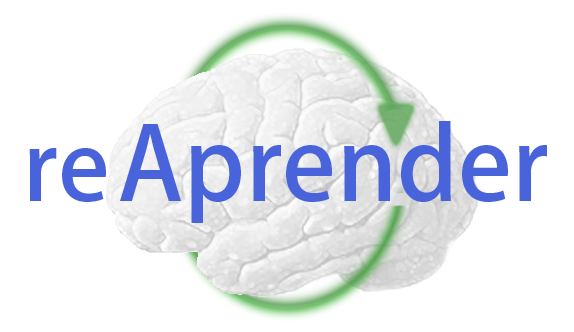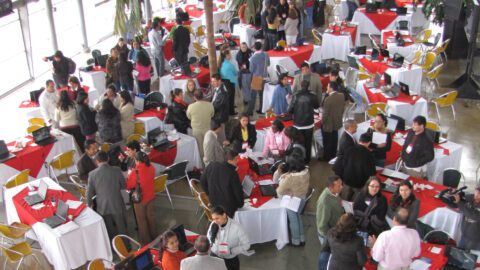 ArTIC (Spanish acronym for “Networked Learning with Information and Communication Technologies“) is the name of a teacher professional development experience that started this month in Uruguay, as part of the activities of the Ceibal Center for supporting children and adolescents’ education. Ceibal Center is in charge of the deployment of the Plan Ceibal, the nation-wide One Laptop per Child initiative, which started in 2007 and at the end of last year started to get into secondary education classrooms.
ArTIC (Spanish acronym for “Networked Learning with Information and Communication Technologies“) is the name of a teacher professional development experience that started this month in Uruguay, as part of the activities of the Ceibal Center for supporting children and adolescents’ education. Ceibal Center is in charge of the deployment of the Plan Ceibal, the nation-wide One Laptop per Child initiative, which started in 2007 and at the end of last year started to get into secondary education classrooms.
As it has been pointed out once and again, teacher training remains a critical issue in any program involving the provision of computers for each student in the classroom (referred to as 1:1). This is true in Uruguay and in any place where such initiatives are being implemented. Not due to lack of options, though, because there’s a huge amount of programs about the use of technology in the classroom, aimed both to in-service and in-training teachers, face-to-face and online.
However, even though a lot of programs have a quite coherent discourse around networked learning (the same you get to hear at every single conference), the practices they model either underuse the possibilities of the tools and media available keeping teachers inside LMS or proprietary platforms, or focus too much on the features of the different tools. So it is hard to expect transformations in teacher’s practices, when the practice they’re exposed to remains unchanged. This (as far as I know) has been an issue with teacher training programs developed so far in Uruguay, so the Ceibal Center wanted to explore different options for the secondary education level.
Because of my work with the EduCamp workshops (documented here and here) and the open online courses I’ve led since 2009 (documented here and here), the Ceibal Center invited me to design a blended course/workshop aimed to secondary school teachers, concerning the development of network learning skills. Something important about the EduCamp workshops (as well as the open courses) is that content is not the main focus. Instead, the most important thing is the possibility to explore first-hand what is networked learning, and what does it look like in practice. This was interesting, but it was the possibility of articulating the two things in one single process that made me jump in.
After spending some time discussing scope and possible narratives, we ended up with a six-week workshop, in which participants explore and experiment with different media, blending this exploration with application in their own classrooms. The process starts with an EduCamp (face-to-face) in which each participant identifies his/her personal learning environment and start to expand it with the support of other participants. This is followed by six weeks of online activities (anyone anywhere can join at this point) and a final meeting at the end, in which participants do a balance of the things learned and identify new learning paths and eventual projects to be developed.
PLEs of paticipants in ArTIC
ArTIC draws a lot of ideas from #ds106, the open online course offered by Jim Groom in the first semester of 2011. However, it places those ideas about permanent creation and media experimentation in a context of professional development for teachers, taking into account also the socio-economic and technological environment of participants, which is quite different from those found in North America (which means that the local ‘zeitgeist’ might not produce things such as #ds106radio, for example). The challenge in ArTIC is to go beyond experimentation and application, and to promote a reflective process about what networked learning means, and what it brings to the classroom. All that in a very short timeframe and with many teachers with limited tech skills.
Right now we’re in the middle of the first ArTIC, in which 50 social sciences teachers from Uruguay (as well as a few from Venezuela, México and Argentina) are going through this learning experiment. Given that it’s the first time we’re doing this, there are several Ceibal Center staff participating, learning about what it means to ‘teach’ in this environment, and learning along with the rest of participants. This is the first time I have an opportunity to share responsibility in this area, so in fact we are developing installed capacity for rethinking a lot of the teacher training activities developed by the Ceibal Center (I like to think that).
[iframe: src=”http://www.flickr.com/slideShow/index.gne?user_id=18032633@N00&tags=artic,educamp” frameborder=”0″ width=”500″ height=”500″ scrolling=”no”]
The EduCamp that jumpstarted ArTIC
So far, it’s a fascinating and inspiring experience. Many teachers who hadn’t previous experience with using technology are exploring new ways to produce content in images, audio and video, and many others are taking the risk of proposing to their students activities based on content creation. Ideas come and go between blogs, and many people report how their “neurons have been shaken”. We are experiencing slowly the power of network effects, and encouraging local experiments that recognize the limitations they have. We’re not just talking about the potential or the possibilities. We are creating them, while growing together in the process.
Obviously, there are a lot of things that can (and will) be improved in the weeks we have left, as well as in future editions of ArTIC. My expectation is that ArTIC will grow from a course into a platform that makes possible the growth of a distributed community of practice and experimentation sustained in time. With time, I expect to see projects of a larger scope, and an emerging understanding of how curriculum is affected by new purposes and new possibilities.
It’s worth saying that implications go further. If ArTIC gets there, we will have a proved, functional experience that could be used anywhere 1:1 projects are being developed. Even though both the EduCamp workshops and the open courses have shown its value, we are talking here about a chance to effectively foster a paradigm change in many teachers, something that you hear about a lot, but that still remains quite difficult to achieve.
There’s another important thing that I’d love to see happening because of ArTIC. In my view, Uruguay has a historic opportunity to grow into a country where technology is not used only to foster ‘competitiveness’. There’s a tangible chance of using those computers to empower a generation in the search for the local answers that we’ll need in the very near future.
But that won’t happen just because of technology. We need to help people rediscover their curiosity and sense of awe and wonder. We need strong role models to show our kids how to squeeze technology as a tool to solve the problems we find every day in our environment. We need to get in touch with our own ability to learn and to improve the world we live in. We need to help every single person to find his/her own voice.
That’s what ArTIC is all about. And I’m happy to be part of it! 🙂




